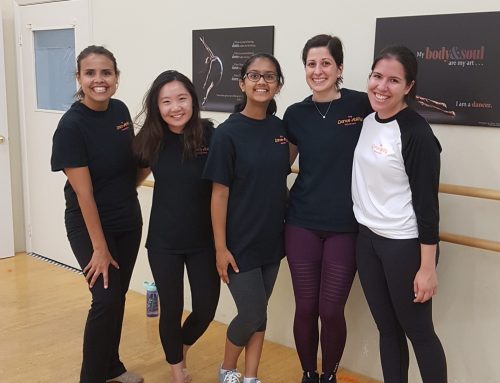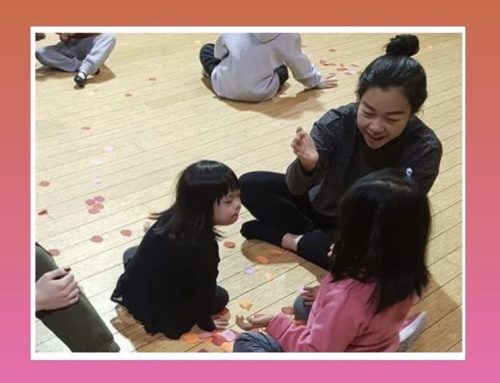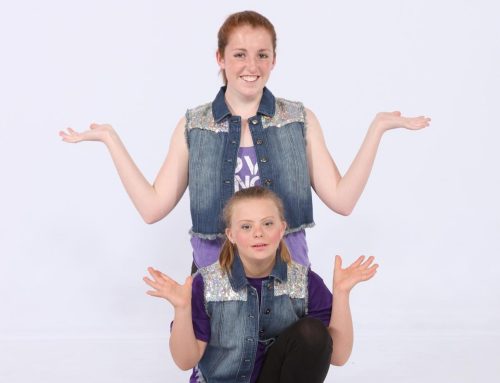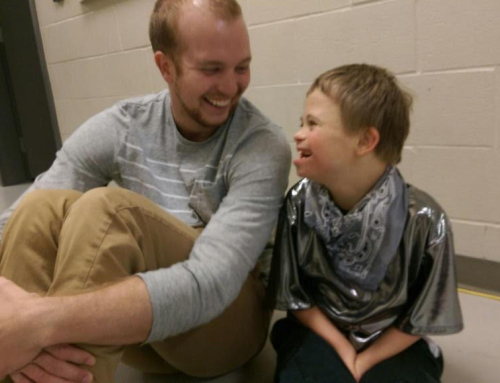We have invited Raven Brooks, student Occupational Therapist at the University of Toronto, to share some reflections about the dynamic roles the Dance Ability Movement OTs have based on her experience during her 10-week placement with us. Since Raven’s impressions covered diverse topics, we’ve decided to publish them in a series of blog posts throughout the next four weeks.
We hope you enjoy!
 Before beginning my student occupational therapy placement at the Dance Ability Movement (DAM), I wasn’t exactly sure what my role would look like, especially in a virtual environment. Now, after 10 weeks, I can tell you that the occupational therapy role is so dynamic within this organization. I can understand why there may be uncertainty about what the occupational therapist’s (OT) purpose is in a dance class, and I think that uncertainty is because so much of what the OTs do is behind the scenes. To show you just how dynamic the OT role is at the DAM, I want to share the various roles the DAM OTs have, some of which I got to take part in as a Student OT these last 10 weeks!
Before beginning my student occupational therapy placement at the Dance Ability Movement (DAM), I wasn’t exactly sure what my role would look like, especially in a virtual environment. Now, after 10 weeks, I can tell you that the occupational therapy role is so dynamic within this organization. I can understand why there may be uncertainty about what the occupational therapist’s (OT) purpose is in a dance class, and I think that uncertainty is because so much of what the OTs do is behind the scenes. To show you just how dynamic the OT role is at the DAM, I want to share the various roles the DAM OTs have, some of which I got to take part in as a Student OT these last 10 weeks!
Supporting New Dancers through an individualized approach
The DAM addresses many of the environmental barriers to participation such as the lack of accessible dance classes, perceptions of what it means to be a dancer, and attitudes of others towards those with different needs. Being a new dancer to the DAM community is a whole new experience for each dancer and their family. One of the OT roles is to help with this transition into the DAM community and it is important that we know what participation means for them and their family.
What is the role of an OT with new dancers? Take a look here:
- OTs meet with new dancers and their families prior to dance classes starting so that the dancer’s interests, preferences and needs can be understood. Using the Canadian Model of Client-Centred Enablement (CMCE) (Townsend & Polatajko, 2007), OTs use enablement skills such as consulting and educating during this first meeting. The OT also sets goals collaboratively with the new dancer and their family to ensure the DAM programming will be beneficial for them. The OT explores what meaningful participation looks like for each dancer and their family so that the DAM can meet them where they are at. This initial intake also allows clear expectations to be set with families regarding realistic goals for the timeframe of the session.
- OTs develop strategies that are focused at the environment/activity level to share with the family, instructor and volunteers. The DAM uses the Pathways and Resources for Engagement and Participation (PREP) approach which “is an evidence-based intervention that focuses on enhancing participation through modifying the environment” (Law et al., 2016). The OT and family identify the barriers in the environment and collaboratively discuss how those barriers can be minimized or removed so that the dancer can participate in their dance class (Law et al., 2016). These strategies are developed to support a new dancer’s meaningful participation and also act as a tool for everyone on the dancer’s participation team to know how they can best support that dancer. A participation team consists of everyone that takes part in supporting the participation of a dancer such as the family, instructor, volunteers and OT (Anaby et al., 2021). Each participation team member contributes knowledge to implementing the participation plan.
- The OT attends the new dancer’s class to observe them and support the strategies that were discussed with the family. This allows the OT to provide recommendations/feedback in the moment, and also follow up on what may not be working with appropriate team members.
- The OT monitors and modifies the strategies to promote meaningful participation for the new dancer and seeks feedback from the dancer/their family to ensure continuous improvement.
Raven Brooks





